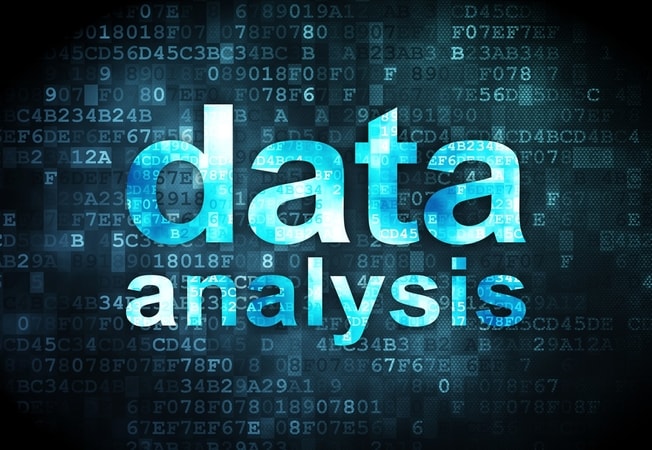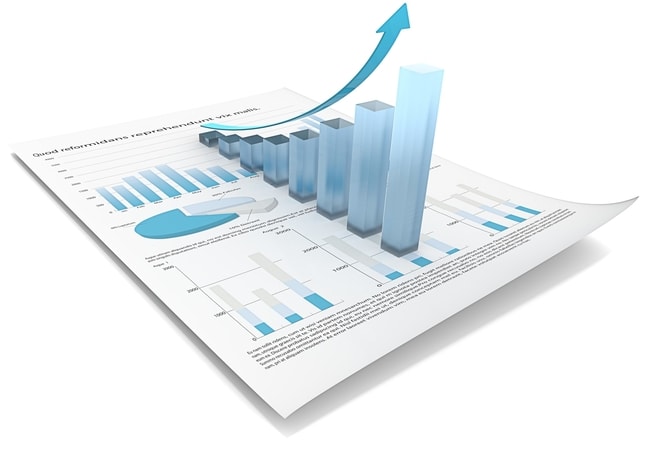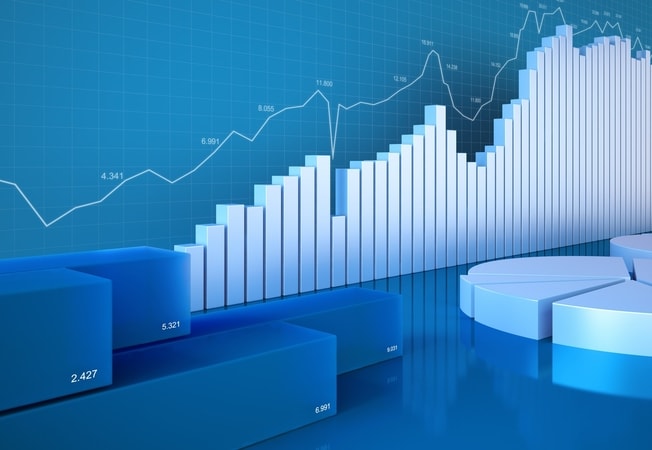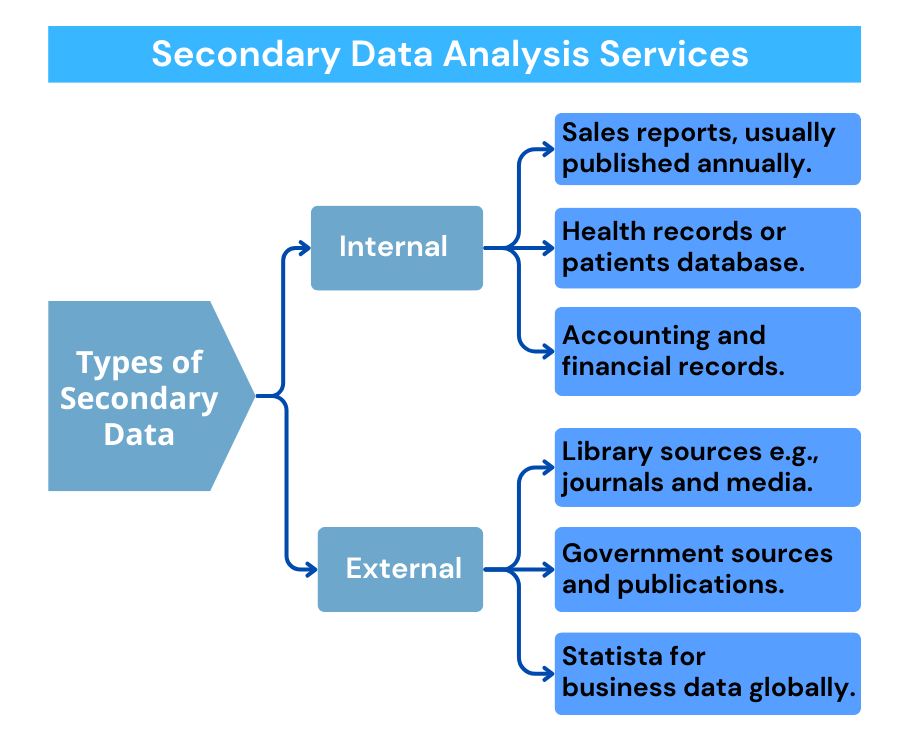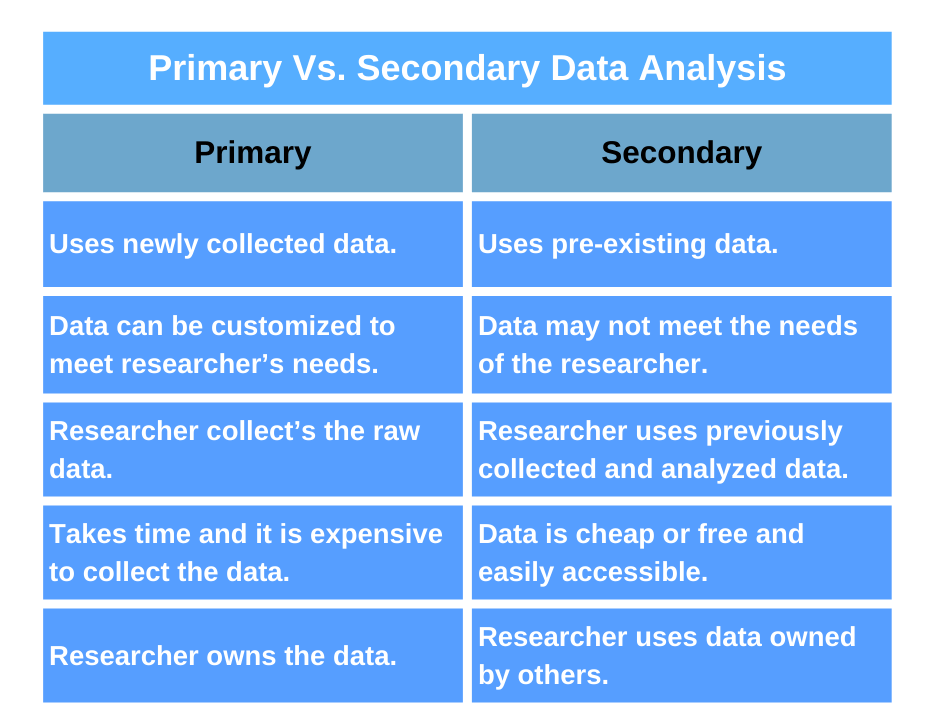Hire an Expert for Secondary Data Analysis
Secondary data analysis involves the use of data collected by other researchers for a different purpose, such as validating previous findings or answering a research question.
These data sets, generally collected by the government, research institutions, and, at times, agencies, provide researchers with reliable, readily available resources to test a hypothesis or examine the characteristics of a population. If you are looking for secondary data analysis services in research, our experts explore existing data, offering services such as data cleaning, analysis, and visualizing results.
This post is a comprehensive guide to secondary data analysis, including the benefits, limitations, how to conduct it, and an example for reference.
Benefits of Secondary Data Analysis
- One of the major benefits is that it is relatively easy and takes minimal time to gain experience in analyzing the data. The data collectors and expert researchers have already done most of the tedious work of conducting research, thus making the analysis process simpler.
- Secondary data to be used for analysis is much cheaper and easier to arrange when conducting data analysis. Often, secondary data is available for free in abundance on the Internet or one can organize with a government agency for data sets.
- Secondary data sets are normally already prepared for data analysis using software such as Statistical Package for Social Sciences (SPSS), SAS, and STATA. This saves you the time that would have been used to code the variables and do programming to do the analysis.
- Present secondary data sets cover a broad range of research topics and are of high quality because they are from credible sources. With these abundant, readily available data sets, researchers can use advanced statistical techniques such as hierarchical linear or fixed-effect modeling for accurate insights.
Limitations of Secondary Data Analysis
- One of the limitations of secondary data analysis is that the data set may not answer your specific research question under study. The reliability of findings also depends on the quality of the researchers' source materials, so one is not assured of the accuracy of the data.
- Some data sets may be too broad, thus making them complex to understand and analyze. This may take the researchers a while to comprehend and study.
- In the case of a recently implemented policy change, secondary data cannot answer the research questions. Hence, the only solution is either waiting for data related to the topic or conducting primary research to do the analysis.
- Another limitation is that the data may have been categorized differently during previous research that the present researcher would have chosen. For example, the previous researcher may have used the word "age'" to mean a category rather than a continuous variable.
Secondary Data Analysis Services in Research
Secondary research is the analysis of data collected by other researchers for a different purpose. Our secondary data analysis experts have access to multiple credible sources for any field of research and experience dealing with secondary data analysis projects in various fields. This section discusses the data analysis procedure:
Step 1: Develop a Research Question
When conducting a study, developing a research question determines the methodology that a researcher will follow. In this step, the data analyst also explains the research design, highlighting the type of data to be collected and the potential sources for collecting it.
Step 2: Identify the Secondary Data Set
The next step is identifying the data set that will be used as a source of secondary data for the research. Various sources can be used to collect secondary data, such as official statistics, technical reports, scholarly journals, trade journals, review articles, government databases, or computerized databases. The most appropriate dataset is chosen depending on your study and research question.
Step 3: Evaluate the Data Set
Once the data analyst locates a dataset that seems viable in addressing the research question then the next step is evaluating the dataset to assess if it is reliable for the study.
There are six key areas that the data analyst looks out for when evaluating the data set: The purpose of the study, what data was collected, when the information was obtained, who did the data collection, how the information was collected, and the consistency of information from one source compared to other sources.
Step 4: Get Rid of Missing Data
After approval of the reliability of the data set, the data analyst now handles any cases of missing data. Primary researchers may have overlooked some key variables or used poor measures when conducting the study, so this process prepares the data for analysis.
Missing data can affect external and statistical conclusion validity resulting in inaccuracy in the final results. Common methods of handling missing data are deletion, weighting, and imputation.
Step 5: Select a Software Package for Data Analysis
Various software analysis packages can be used for secondary data analysis, such as SPSS, R, STATA, and others. Before conducting the analysis, import the data into the statistical analysis software then clean the data by addressing missing values and outliers. Based on the type of data, apply the most appropriate statistical technique such as content analysis.
Step 6: Interpret the Results
Finalize the analysis by interpreting the results. Highlight any statistical results and any limitations faced while conducting the study. Also, explain if the research objectives were fulfilled.
Secondary Data Analysis Example
A data analyst was hired by a food industry company to evaluate how they can boost sales and improve customer satisfaction. Instead of conducting primary research, they decided to collect secondary data from the company website and trade publications. They performed multiple linear regression in SPSS to predict the outcome of other variables in improving customer satisfaction. Finally, they interpreted the results and identified the necessary measures they should take to achieve their objectives.
Why Hire a Secondary Data Analysis Expert from Our Company?
- Our experts have extensive experience working with all the data analysis software such as SPSS, STATA, or S and deliver quality, accurate results based on your project, thesis, or dissertation. Most have Masters and Doctorate degrees in fields such as Statistics and Computer Science; hence are familiar with simple or complex analysis procedures.
- Regardless of any time limits that you may have to work on your analysis project, our expert data analysts can promptly deal with the analysis and deliver the results on time without compromising on quality.
- Our expert data analysts have access to credible peer-reviewed research materials that they use to conduct research. They make use of sources such as Government websites, databases, and digital repositories to acquire data used for secondary data analysis.
- We offer customized solutions in any field of research, such as psychology, education, market research, sociology, health, and social sciences, among others. They offer tailored solutions to gain insights from a raw data set, whether it's for academic purposes or a professional setting.
Summary
Secondary data analysis is analyzing information that someone has compiled. This data is acquired from credible sources such as government databases or research institutions. One of the major advantages of conducting this analysis is that it is cheap and less time-consuming as opposed to primary research.
Conducting secondary data analysis involves a series of steps which are stating the research objective, identifying and evaluating the data set, data cleaning, choosing analysis software, conducting analysis, and interpreting results.
You can choose to hire a secondary data analysis expert from our services for accurate and reliable insights. Our services are available around the clock to cater to your analysis needs. Reach out to us today to get started. You can also join our live chat for more assistance.

